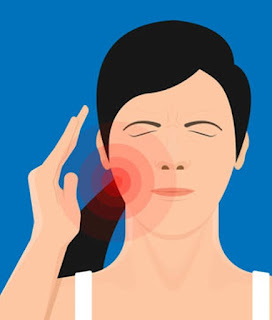Urological Adverse Effects of COVID-19 Vaccination
Urological Adverse Events of vaccination (AEs) were reported in several studies mostly focusing on storage lower urinary tract symptoms (LUTS), including urinary urgency and urinary frequency.
Recent analysis investigated LUTS before and after the first dose of COVID-19 vaccine and the association between pre-vaccinated overactive bladder (OAB) and the worsening of storage LUTS following COVID-19 vaccination. This cross-sectional study in a third-level hospital in Taiwan used the validated pre- and post-vaccinated Overactive Bladder Symptom Score (OABSS). Diagnosis of OAB was made using pre-vaccinated OABSS. The deterioration of storage LUTS was assessed as the increased score of OABSS following vaccination. Of 889 subjects, up to 13.4% experienced worsened storage LUTS after vaccination. OAB was significantly associated with an increased risk of worsening urinary urgency (p = 0.030), frequency (p = 0.027), and seeking medical assistance due to urinary adverse events (p < 0.001) after vaccination. The OAB group faced significantly greater changes in OABSS-urgency (p = 0.003), OABSS-frequency (p = 0.025), and total OABSS (p = 0.014) after vaccination compared to those observed in the non-OAB group. Multivariate regression revealed that pre-vaccinated OAB (p = 0.003) was a risk for the deterioration of storage LUTS. In conclusion, storage LUTS may deteriorate after vaccination. OAB was significantly associated with higher risk and greater changes in worsening storage LUTS. Storage LUTS should be closely monitored after COVID-19 vaccination, especially in those OAB patients.
The findings of this study demonstrated that after COVID-19 vaccination, up to 13.4% of the 889 participants revealed a deterioration in storage LUTS. Furthermore, pre-vaccination OAB was significantly associated with higher risk of worsening storage LUTS and greater change in the storage LUTS, especially urinary urgency and frequency, after COVID-19 vaccination.
Here is an exemplar case report:
A 74-year-old woman with a history of controlled diabetes mellitus (HbA1C=5), a history of hysterectomy 25 years ago, and no previous history of urinary complications, referred to a research center with a complaint of voiding dysfunction and urinary retention after receiving the second dose of Oxford/AstraZeneca vaccine.
She stated that after the first dose of vaccine, she had voiding dysfunction, suprapubic pain, hesitancy, weak urine stream, and straining. The pharmacotherapy delivered due to clinical suspicion of cystitis, and over time, the condition was improved. One week after the second dose of Oxford/AstraZeneca vaccine, patient returned with urinary frequency and high blood pressure.
After several urine catheterizations, she was still unable to urinate. The patient underwent clean intermittent catheterization and follow-up for any improvement.
REFERENCES
Chen YC, Liang YC, Ho SJ, Chen HW, Juan YS, Tsai WC, Huang SP, Lee JT, Liu YP, Kao CY, Lin YK. Does COVID-19 Vaccination Cause Storage Lower Urinary Tract Symptoms?. Journal of Clinical Medicine. 2022 May 12;11(10):2736.
Kadali RA, Janagama R, Peruru S, Malayala SV. Side effects of BNT162b2 mRNA COVID-19 vaccine: A randomized, cross-sectional study with detailed self-reported symptoms from healthcare workers. International Journal of Infectious Diseases. 2021 May 1;106:376-81.
Kadali RA, Janagama R, Peruru S, Gajula V, Madathala RR, Chennaiahgari N, Malayala SV. Non‐life‐threatening adverse effects with COVID‐19 mRNA‐1273 vaccine: A randomized, cross‐sectional study on healthcare workers with detailed self‐reported symptoms. Journal of medical virology. 2021 Jul;93(7):4420-9.
Salehi-Pourmehr H, Akbari ND, Hajebrahimi S, Salehi S. Underactive and low compliance bladder: A possible Presentation of COVID-19 vaccination. Continence Reports. 2022 Mar 1;1:100002.




Comments
Post a Comment